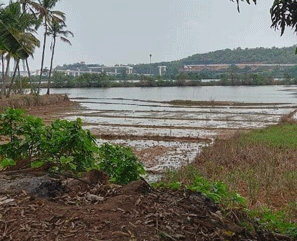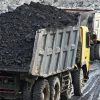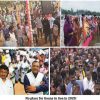Goa is abuzz with excitement as vintage bike and car owners, users, collectors and fans are decking […]

THE SLOW DEATH OF AGRICULTURE IN GOA
FINANCE, July 24- July 30, 2021 July 23, 2021NEGLECTED: Khazan lands which were the most fertile agricultural fields in Goa are located on the coastal belt and are put to multiple use. In the non-farming season they are used for pisciculture. However, the khazan lands are not being cultivated as fishing is more profitable and involves less labour. Ironically, a lot of outsiders have started setting up small organic farms in Goa
By Arvind Pinto
THIS week these are some of my monsoon thoughts. Being on the Western coast both Mumbai and Goa are buffeted with the fury of the South-West monsoon rains. Thanks to the bounty of mother nature, the monsoons have been abundant, and the fear of a poor summer crop would not be an issue. This is indeed, good since agriculture plays a dominant part in the Indian economy, even though it does not figure in the economic parameters of either Mumbai or Goa. Goa with its bountiful rain and agricultural lands could have been the granary of the West coast but it has been witnessing a slow decline in agriculture and its own agricultural produce for self-sufficiency in food..
While agriculture is an important activity in Goa, it has been declining for a variety of factors. In 1961 nearly 70% of the Goan population was engaged in agriculture as a full-time occupation. While it may be true that the Portuguese did not do much for the industrialization of Goa, agriculture was the main stay of the economy before 1961. The cultivation of paddy was the main crop, followed by cashew and coconut. In 1961, the total area under paddy cultivation was 50,302 hectares with a production of 79,948 metric tonnes. Today the acreage under cultivation has reduced to 42,973 hectares, but the production has increased to 1,55,818 metric tonnes. This increase in productivity is due to the increased use of fertilizers and better varieties of seeds that the government provides.
But the stark fact is that acreage under cultivation is gradually reducing. Agriculture is no longer consider important to the Goan economy – tourism and leisure activities have become the mainstay of economic life for the state. There are several factors for the gradual decline of agriculture in Goa. Before 1961, land holdings were in the hands of the elite the “batkar,” while the actual tilling of the soil was done by tenants or “munkars.” With independence, and the prominence of the MGP party, land was given to the tillers. This resulted in the fragmentation of land holdings, making it difficult for the small farmers to effectively increase either yield or their acreage.
Further, small landholdings did not have sufficient manpower to help in cultivation. Over the decades, with the growth of education, the Goan youth are not interested in taking up to agriculture. Thus, there is an acute shortage of labour in agriculture. Today’s agricultural labour comes from outside the state. Many of these groups of contract labour are from either Karnataka or more recently from Andhra Pradesh.
SMALL STATE
GOA being a small state that borders the Arabian Sea, its coastal areas are exposed to salinity and therefore do not qualify as prime land. Its hinterland is however not productive enough since most of it is forested. Even before the Portuguese ruled Goa, the locals were able to enlarge their cultivable land . This was known as khazan or lands reclaimed from the river or the sea and protected by a network of bunds to protect them from tidal overflows, but these lands are no longer being cultivated.
These khazan lands enabled the cultivation of land even during the dry seasons since water was stored in little ponds from which water was released according to the requirement of the farmers. These bunds and waterway were regulated by the community and repairs of the waterworks were also regulated by a community collection.
Sadly, over the decades many of these Portuguese era systems of waterways have fallen into disuse. With little interest in agriculture and the community systems to regulate these bunds several of these have become non-operational. The falling into disuse of these waterways is a reflection of the decline of agriculture in the state.
Cultivation is Goa is no longer economical – despite the fact that the munkars, the tillers of the soil, were given rights to the land they tilled. Agriculture in Goa also unfortunately suffered from the lack of labour, the inherent disinterest of Goans in cultivation and today, the increasing commercialization which is due to increasing construction, both in the cities and villages of Goa. Goan agriculture is becoming a fading memory – the sight of lush green watery fields with crops growing or sowing operations under way is now a fantasy of the past.
Thus today, Goa like Mumbai has little need for the rains. Goans would prefer selling their fields to the builders rather than cultivate them. This is due to several reasons. In the first place, the Goan bhatkar, the landlords owners as they are called, do not work on the fields themselves. They are dependent on their munkar who tilled the soil and gave a portion of the yield to the batkar. With the land reforms the munkar became owners of the fields they tilled. Over time cultivation of their small plots of land was uneconomical and with education the munkar children were no longer interested in pursuing agriculture as a profession.
So with a agriculture dying in the State much of the produce of cereals and vegetables come from across the border from Belgaum or Belgavi. In fact, much of Belgavi’s economy is thriving on vegetables and fruit they supply to Goa. One of the interesting aspects of Goan ecology is the fact that large tracts of its land is covered with a canopy of coconut trees. In 2015, the Goa government decided that the coconut plant is not a tree. Thus, there was no forest permission required for the cutting of coconut trees. This decision was evidently taken to allow a distillery to cut down 500 coconut trees to build their distillery in Sanguem taluka. There was massive opposition to this decision.
Fortunately, in 2017, the government having realized the public opposition to its plans, made the coconut palm the State tree. Now permission is required to cut a coconut tree! However, despite being a State tree, the production of coconuts has not increased in the State. There has been little research or scientific cultivation of the coconut tree. Besides coconuts which are used widely in much of Goan cooking, the wood of the coconut tree is also used by villagers.
Thankfully, the cultivation of cashew continues. There are extensive cashew groves on the highlands of Goa. Thanks to the popularity of feni, cashew continues to expand. Goan cashew nuts are also a popular item of sale for tourists.
With the emphasis on tourism and the growing industrialization of the State, Goan agriculture is now not an important aspect of the economy. Much of the arable land adjoining the urban areas, have been commercialized. Landowners now see greater profits in selling their land to developers rather than endure the drudgery of tilling their ancestral lands.














